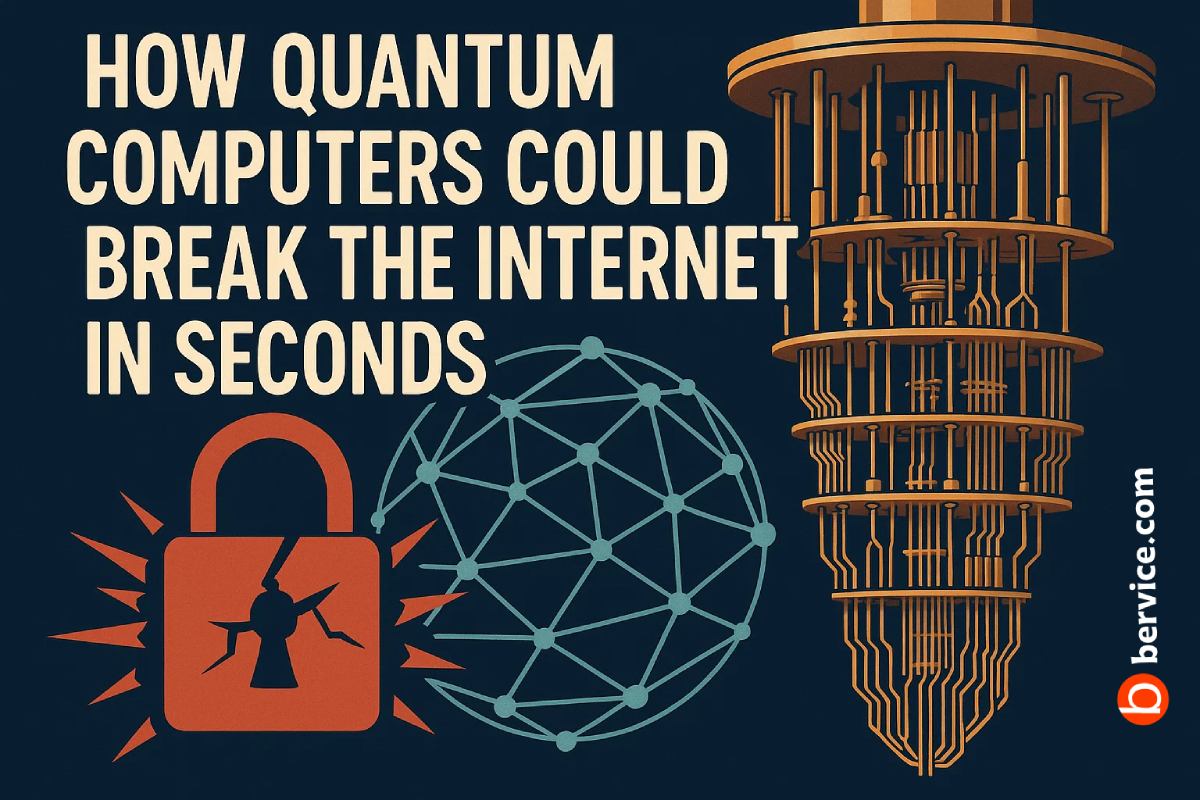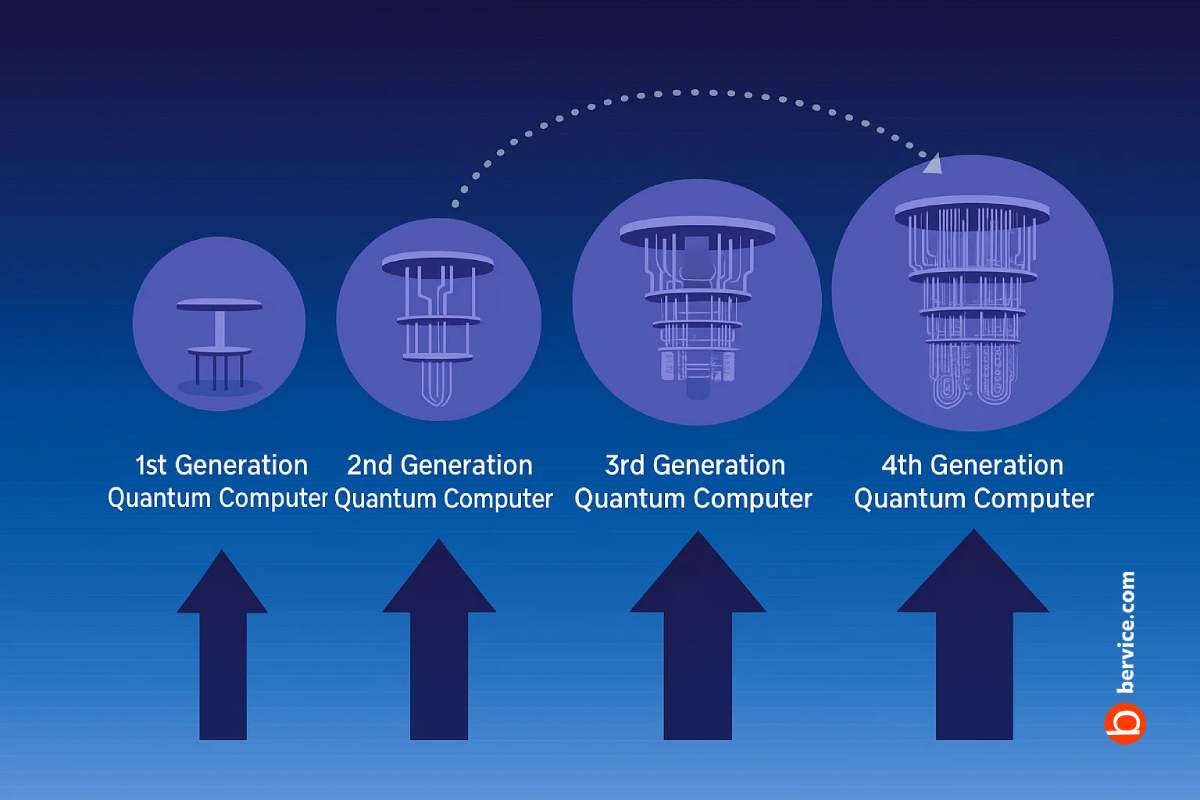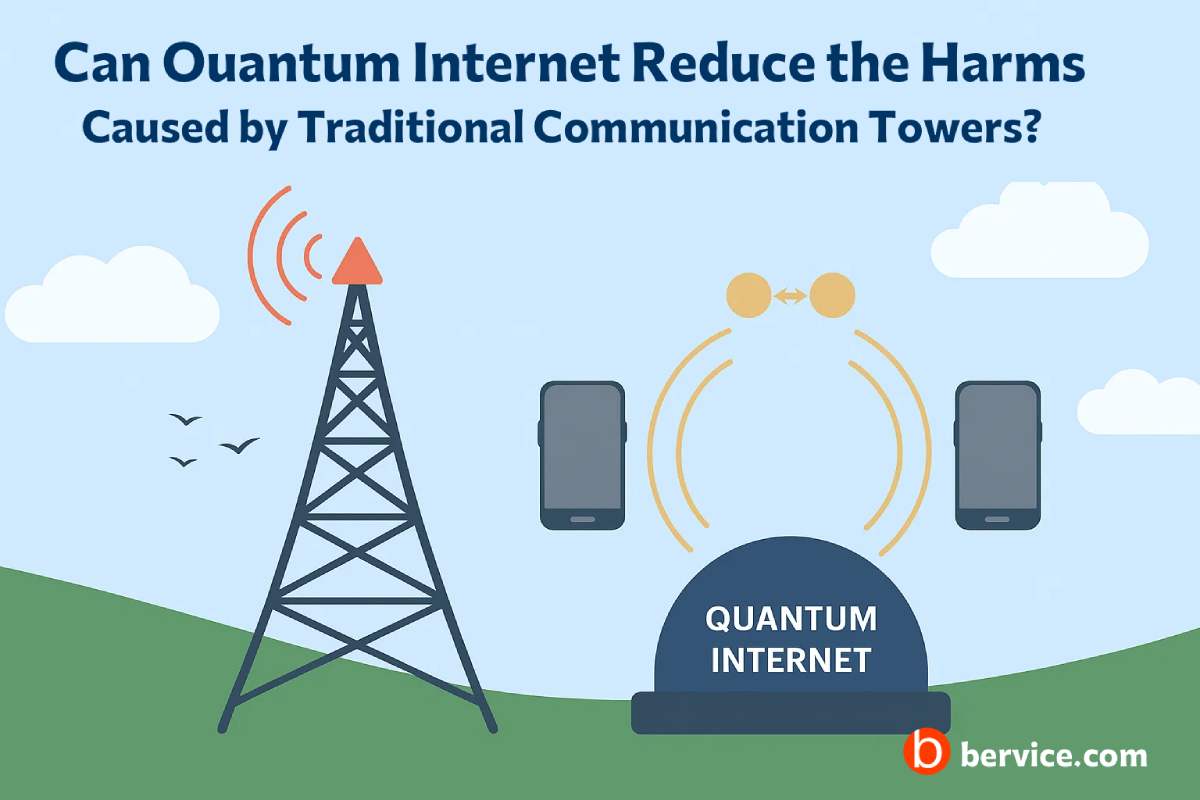
An Overview of Quantum Threats and Their Impact on Banking, Blockchain, and Global Communications
Introduction: A Ticking Clock for Digital Security
Quantum computing is no longer a distant theory. With steady advancements by research institutions and tech giants, we are approaching a future where quantum machines will outperform classical computers in critical tasks. Among these, one of the most disruptive capabilities is their potential to break the cryptographic foundations of today’s internet. In just seconds, a sufficiently powerful quantum computer could render encrypted communications, financial systems, and blockchain technologies vulnerable — shaking the digital world to its core.
The Quantum Threat: Why Current Encryption Is at Risk
Most secure systems today rely on asymmetric cryptography, which uses mathematical problems that are difficult for classical computers to solve — like factoring large prime numbers (RSA) or solving discrete logarithms (ECC).
Quantum computers, however, are expected to run Shor’s algorithm, which can solve these problems in polynomial time, making RSA, DSA, and ECC obsolete. Once quantum machines reach a critical number of stable qubits, they could:
- Decrypt intercepted encrypted data retroactively (so-called store now, decrypt later threats)
- Forge digital signatures used in financial transactions
- Impersonate users or institutions in secure communications
These are not mere theoretical possibilities. The National Institute of Standards and Technology (NIST) is already in the process of standardizing post-quantum cryptography (PQC) to address this impending crisis.
Impact on the Banking System
Banks and financial institutions depend heavily on cryptography for:
- Secure online banking (TLS/SSL)
- ATM authentication
- Inter-bank fund transfers (SWIFT)
- Digital signatures for contracts and transactions
A quantum-enabled attacker could potentially:
- Intercept and decrypt financial transactions in real-time
- Forge credentials to access bank accounts
- Compromise digital payment systems (e.g., Apple Pay, Google Pay)
The global financial system, which handles trillions of dollars daily, could face massive fraud, data breaches, and operational chaos if quantum-resistant safeguards are not implemented in time.
The Blockchain Breakdown
Blockchain, the backbone of cryptocurrencies and decentralized systems, is also vulnerable. Most public blockchains use ECDSA (Elliptic Curve Digital Signature Algorithm) to secure wallets and validate transactions.
A quantum computer could:
- Derive a user’s private key from a public key exposed in a transaction
- Steal assets from wallets (especially those reused or inactive)
- Perform double-spending by rewriting transaction history on low-hashrate chains
This would not only undermine cryptocurrencies like Bitcoin and Ethereum but also destabilize smart contract platforms, DeFi protocols, and tokenized asset infrastructures.
While solutions like quantum-resistant blockchains and hybrid signature schemes are being explored (e.g., using lattice-based or hash-based cryptography), they are not yet widely adopted.
Quantum vs. Communication Networks
Secure communications — from personal messaging to military-grade systems — rely on protocols like:
- TLS (Transport Layer Security)
- VPNs and SSH
- End-to-end encrypted messengers (e.g., Signal, WhatsApp)
Quantum attacks could break these protocols by cracking the key exchange process (e.g., RSA, DH, ECDH). The result:
- Compromise of government secrets and defense infrastructure
- Exposure of personal and corporate communications
- Destruction of trust in digital privacy
To counter this, Quantum Key Distribution (QKD) and PQC-based protocols are being developed, but they are not yet scalable or globally standardized.
Timeline and Readiness: When Will It Happen?
Estimates vary, but many experts suggest that a Cryptographically Relevant Quantum Computer (CRQC) — one that can break RSA-2048 — could emerge by 2030 to 2035, or sooner. Governments (e.g., the U.S., China, EU) have allocated billions toward quantum R&D.
Despite this, most organizations are unprepared. A recent survey by Deloitte found that over 60% of enterprises have not yet started planning for post-quantum migration.
Preparing for the Quantum Era
To mitigate the risks, organizations and governments must:
- Inventory cryptographic assets
Identify where and how vulnerable encryption is used. - Adopt crypto-agility
Design systems that can be upgraded to new cryptographic standards quickly. - Pilot post-quantum algorithms
Use NIST-recommended algorithms like Kyber, Dilithium, and Falcon for testing. - Educate stakeholders
Build awareness across technical and executive teams about the quantum threat. - Monitor supply chains
Ensure that vendors and partners are also preparing for post-quantum security.
Conclusion: A New Arms Race in Cyberspace
The rise of quantum computing signals a new chapter in the cyber arms race. Just as the internet transformed the world, quantum breakthroughs will redefine the boundaries of computation, security, and trust.
Without timely action, the very infrastructure that underpins global banking, digital communication, and blockchain-based trust could be rendered obsolete. The quantum future is coming — and readiness is not optional.
Connect with us : https://linktr.ee/bervice





